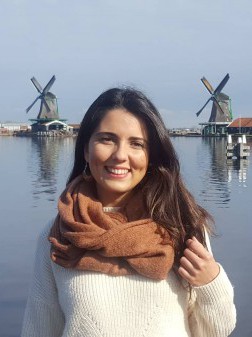abstract
The present work presents a strategic oxidative desulfurization system able to efficiently operate under sustainable conditions, i.e. using an eco-friendly oxidant and without the need of extractive organic solvents. The catalytic performance of Eu(PW11039)(2)@aptesSBA-15 was evaluated for the oxidative desulfurization of a multicomponent model diesel using a solvent-free or biphasic systems. The results reveal its remarkable desulfurization performance achieving complete desulfurization after just 2 h of reaction. Moreover, the composite has shown a high recycling ability without loss of catalytic activity for ten consecutive ODS cycles. Interestingly, under solvent-free conditions it was possible to maintain the desulfurization efficiency of the biphasic system while being able to avoid the use of harmful organic solvents. In this case, a successful extraction of oxidized sulfur compounds was found conciliating centrifugation and water as extraction solvent. Therefore, this work reports an important step towards the development of novel eco-sustainable desulfurization systems with high industrial interest.
keywords
MESOPOROUS SILICA; DEEP DESULFURIZATION; SUBSTITUTED POLYOXOMETALATE; CATALYTIC PERFORMANCE; EFFICIENT CATALYSTS; MODEL DIESEL; GAS OIL; SBA-15; FUEL; TEMPERATURE
subject category
Chemistry; Environmental Sciences & Ecology
authors
Ribeiro, SO; Nogueira, LS; Gago, S; Almeida, PL; Corvo, MC; de Castro, B; Granadeiro, CM; Balula, SS
our authors
acknowledgements
This work was partly funded through the projects REQUIMTE-LAQV [FCT (Fundacao para a Ciencia e a Tecnologia) Ref. LAQV, REQUIMTE (POCI-01-0145-FEDER-007265, UID/QUI/50006/2013)] and CENIMAT, 13N (POCI-01-0145-FEDER-007688, UID/CTM/50025/2013), financed by national funds through the FCT/MEC and when appropriate co-financed by the Fundo Europeu de Desenvolvimento Regional (FEDER) under the PT2020 Partnership Agreement. The FCT and the European Union are acknowledged for the post-graduation grants SFRH/BD/95571/2013 (to SOR), SFRH/BPD/111168/2015 (to SG) and SFRH/BPD/73191/2010 (to CMG) co-funded by Ministerio da Ciencia, Tecnologia e Ensino Superior (MCTES) and the European Social Fund through the program POPH of QREN. The authors also acknowledge the Portuguese Nuclear Magnetic Resonance Network (PTNMR) and the research group of Dr. Isabel Goncalves from CICECO Laboratory, University of Aveiro, Portugal.



